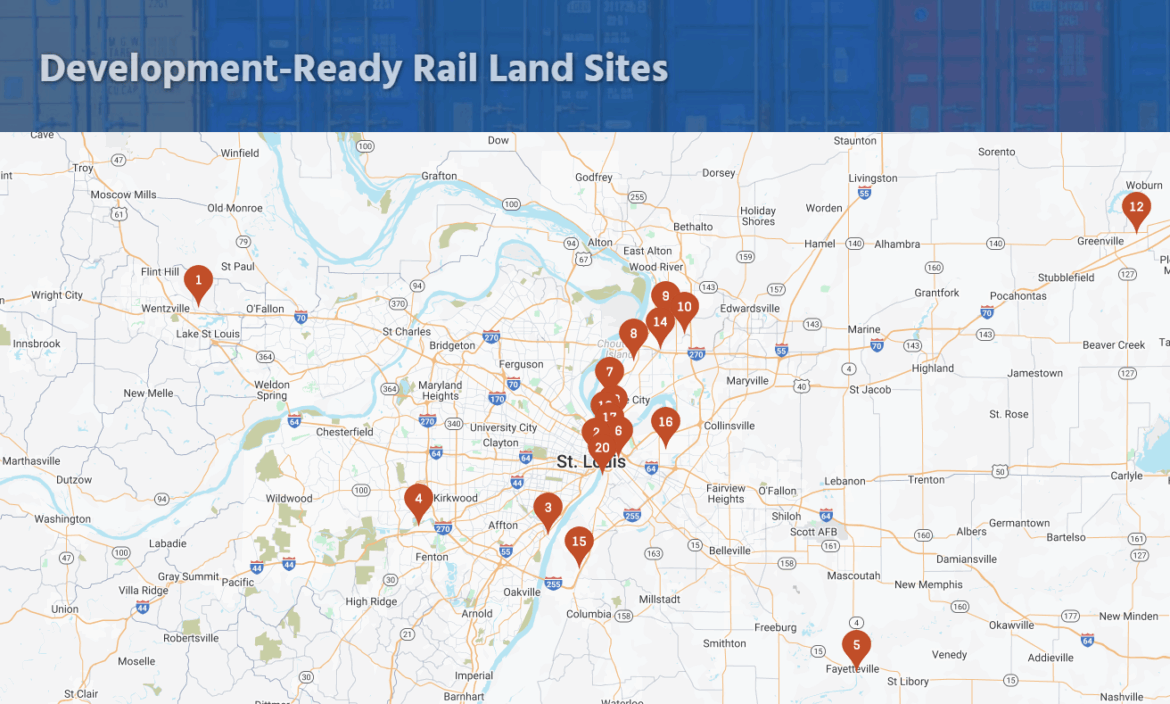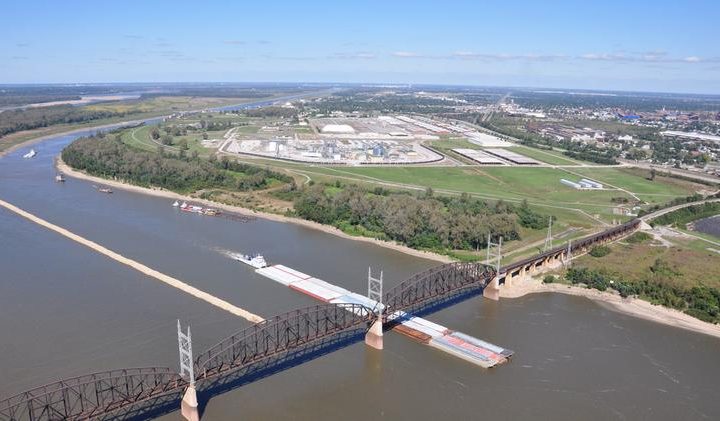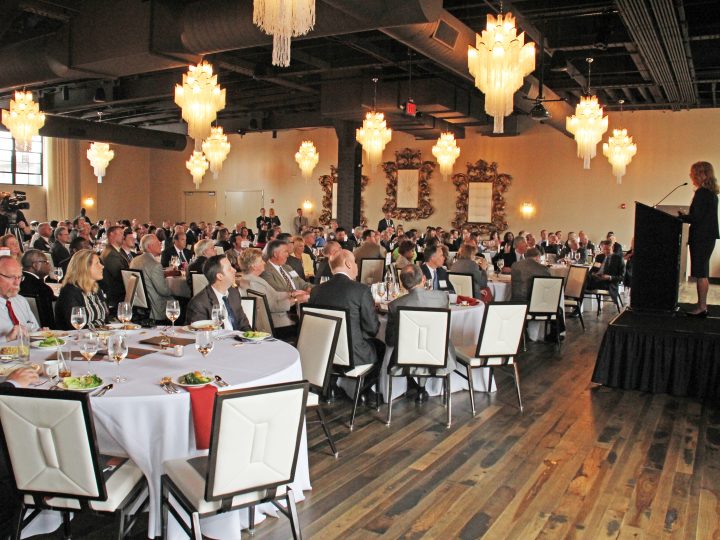
The St. Louis Regional Freightway has added more than 300 additional acres spread across four properties in Southwestern Illinois to its growing pipeline of rail-accessible industrial real estate sites: Madison Yard Farm Field in Venice; Wiggins Industrial Lead and Wiggins 5, both in East St. Louis; and Wiggins 2 Yard, which encompasses land in both Brooklyn and East St. Louis. All owned by Terminal Railroad Association of St. Louis (TRRA), they bring the total number of rail-served sites in the pipeline to 26, spread across 20 locations. These sites all feature heavy industrial user zoning ready for developers to take advantage of the region’s global connectivity with access to six Class I railroads and rail infrastructure that is constantly being improved.
“These new sites that TRRA has added to our pipeline provide four more great reasons for businesses and site selectors seeking a rail-served site to consider the St. Louis region and tap into all the other benefits the bi-state area offers, from affordability and multimodal access to an available, talented workforce and exceptional quality of life,” said Mary Lamie. Lamie is Executive Vice President of Multimodal Enterprises for Bi-State Development and head of the St. Louis Regional Freightway, which maintains a featured real estate sites list at TheFreightway.com that includes all of the bi-state area’s rail-served sites.
Madison Yard Farm Field in Venice, Illinois, is the largest of the four, encompassing 140 acres with rail access by TRRA, which connects to all six Class I Railroads. It lies within an Opportunity Zone and has truck access via IL Rte. 3, with proximity to Interstates 70, 64, 44 and 55. The site also has access to all major utilities.
At 80 acres, the Wiggins 2 Yard encompasses portions of both Brooklyn and East St. Louis, Illinois, also lies in an Opportunity Zone, and offers TRRA connections to the six Class I Railroads. The site features barge access through TRRA riparian rights, and offers truck access via IL Rte. 3 with proximity to four interstates.
Wiggins 5 in East St. Louis, Illinois, is a 56-acre site that also has an additional 20 acres to the north available for sale. Wiggins Industrial Lead, also in East St. Louis, encompasses the final 45 acres, which have truck access via Front Street. Both sites also are in Opportunity Zones, have rail access via TRRA access to the six Class I Railroads, and access to all major utilities, river and barge access and levee protection.
With the Federal Highway Administration estimating the freight industry will increase 30% over the next two decades, the St. Louis region aims to take advantage of this projected growth by focusing on new industrial development within rail-accessible sites, while simultaneously investing in strengthening existing rail infrastructure.
“Rail distribution continues to grow in importance, and the St. Louis region is already recognized as one of the largest rail hubs in the nation,” said Brent Wood, President of Terminal Railroad Association of St. Louis and Chair of the St. Louis Regional Freightway’s Freight Development Committee. “Rail service and infrastructure in the St. Louis region are constantly improving, thanks to the commitment of public and private leaders who are collaborating to identify priority projects and advocate for funding for them.”
Recent investments include the $222 million replacement of the Merchant’s Bridge over the Mississippi River just north of downtown St. Louis; more than $10 million for track signal and switch improvements made at the junction of five of the region’s railroads in Mitchell, Illinois; and an estimated $75 million in improvements underway for the MacArthur Bridge, which crosses the Mississippi River south of downtown St. Louis. A series of projects at St. Louis area ports will enhance rail infrastructure and help increase the integration of barge to rail connectivity in what is already recognized as the most efficient inland port system in the nation.
Lamie says the St. Louis region’s continued investment in rail infrastructure improvements benefits all modes of transportation and supports the St. Louis Regional Freightway’s strategic initiative that is helping advance underutilized sites that support industrial development.
“Continuing public and private sector collaboration supports the unparalleled rail service available in the St. Louis region, providing access to all corners of the country without interchange, and the ongoing efforts to expand our pipeline of developable, ready-to-market industrial sites,” Lamie said. “These are sites that can handle heavy industry and are ideal for end-users that are ready to take advantage of the strong rail infrastructure, intermodal capacity and proximity to suppliers in the bi-state St. Louis area.”
To view the full report with information about each of the rail served sites, visit https://www.thefreightway.com/real-estate/rail-access/ or contact Mary Lamie at mclamie@nullTheFreightway.com



